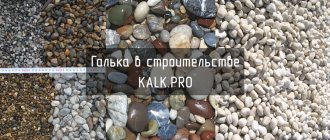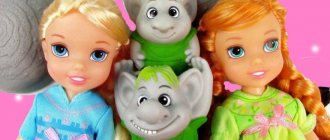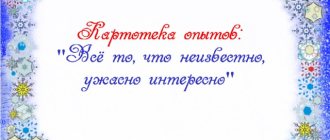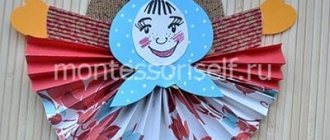Methods of introducing preschoolers to the objective world
Anzhelika Gulakova
Methods of introducing preschoolers to the objective world
Methods of introducing preschoolers to the objective world
An important place in enriching children's vocabulary is occupied by special classes to familiarize themselves with the objective world . Their main goal is to introduce into children’s speech the names of objects , their parts, some signs, properties and qualities. Children learn to identify the qualities and properties of objects , their purpose, and then generalize them into conceptual groups.
The methodology for these classes was proposed by E. I. Tikheeva and clarified and supplemented by V. I. Loginova. The authors identify 3 groups of classes to familiarize themselves with the subject world :
1- initial familiarization with the subject .
2 - familiarization with the qualities and properties of objects .
3 - formation of concepts in the process of generalizations.
Initial familiarization with objects - introducing new names of objects into the dictionary and actions with them . Conducted in younger and middle ages.
Meaning:
1. A holistic idea of the subject
2. The connection between the purpose of an object , its structure, and material.
Requirements for these classes:
1. Cognitive activity is represented by practical tasks and is based on gaming techniques.
2. Use of visual material according to the number of children.
3. Active actions with objects , children choose suitable ones and motivate the choice.
4. Objects must be known to children.
5. Leadership is provided through instructions and questions.
Lesson structure.
The introductory and final parts are similar to other lessons.
Main part
1. Statement of the educational task ( the formation of differentiated perception is carried out through the game).
2. Examination of the subject , structure, purpose, introduction of words.
3. Children’s choice of subject , consolidation of knowledge, consolidation of words.
In classes to deepen knowledge about the qualities and properties of objects holistic understanding of the object : a connection is established between the purpose of the object and its structure , the material from which it is made, and the specific features of the object are determined .
Meaning:
1. The concept is formed that all things are made of different materials; there are processes that transform material into a thing (sewing, knitting, modeling, woodworking, etc.)
2. The ability to see material in a thing is formed, to establish the properties of the material in some ways (press, bend, tear)
.
Requirements
1. Thorough sensory examination.
2. Visual material on the number of children.
3. Inclusion in activities.
4. The qualities being isolated must be clearly presented .
5. Comparison with other qualities and properties of other objects .
6. The teacher’s guidance is carried out through questions and precise instructions.
Lesson structure
1. The introductory and final parts are similar to other classes.
Main part
1. Isolating qualities in the situation of a particular activity (first indicating the action, then asking the children)
.
2. Teaching research actions to isolate the desired property (first indicate the action, a question of a stating and indirect nature (Strong paper, why)
.
3. An exercise in identifying a new quality and property in a variety of objects - consolidating properties.
Complication - at an older age, these classes become more complicated, they are called “Comparison of objects "
their goal is to select the most accurate word to characterize the highlighted features.
Requirements
1. A sufficient number of compared characteristics (shape, size, color, their differences and commonality.
2. Planned comparison of the whole, parts and details, generalization as a whole.
3. Selection of teaching methods - instructions and questions.
4. Maximum speech activity of children.
Formation of specific and generic concepts in the process of generalization.
Classes are held in all age groups. the same essential features in different objects There are two types of these activities - the formation of specific and generic concepts.
Species concepts are objects of the same type with insignificant differences, for example: chair, stool, armchair.
Lesson structure
The introductory and final parts are similar to other classes.
Main part
1. The need for choice through the game.
2. Selecting an item from a group of similar ones (how did you find out? Why did you take this item and not another? What does this item that others don’t (and vice versa? After each answer - motivation - Why do you think so?
3. Exercise in choosing objects .
Generic concepts - objects of different types , but united by one purpose (dishes, transport, furniture, etc.)
Lesson structure
The introductory and final parts are similar to other classes.
Main part
1. Consideration of 3-4 types, highlighting known features (what is the car for, who drives it)
2. Work on the concept ( definition of an essential feature, generalization of a group of 3-4 types and introduction of the word generalization (we highlight what is the same and what is different for all types and conclude: everything that is used to transport people and cargo is called transport)
3. An exercise in subsuming specific concepts under generic ones.
Subsequent work is based on consolidation and differentiation of concepts.
Familiarization with the subject and social environment of children in the senior group
MUNICIPALITY OF THE CITY OF NOYABRSK
MUNICIPAL BUDGET PRESCHOOL
EDUCATIONAL INSTITUTION "Golden Key"
MUNICIPAL FORMATION CITY OF NOYABRSK
| 629805, Russia, Yamal-Nenets Autonomous Okrug, Noyabrsk, Mira Ave., 43. Tel. 34-10-90 E - mail : [email protected] list . ru OGRN 1158905010087 INN/KPP 8905057671//890501001 |
(MBDOU "Golden Key")
| Agreed: Deputy Head MBDOU "Golden Key" ______________ "_____"_________________ 2015 | I affirm: Head of MBDOU "Golden Key" ______________ "_____"______________ 2015 | |||
WORKING PROGRAMM
directly educational activities
“Acquaintance with the subject and social environment”
for older group
educational field " Cognitive development "
direct educational activities 2 times a month
(total 18 direct educational activities per year)
2015-2016 academic year
Explanatory note
The work program for familiarization with the subject and social environment of the educational field “Cognitive Development” for children of the senior group is compiled on the basis of the main educational program of preschool education of the MBDOU “Golden Key”.
The work program is focused on the use of educational and methodological manuals:
O.V. Dybina “Acquaintance with the subject and social environment” Senior group. M.: MOSAIC-SYNTHESIS, 2014.
The program is designed to conduct direct educational activities (DEA) 2 times a month (18 times a year), the duration of the ECD is 25 minutes.
Target:
familiarization with the surrounding social world, broadening the horizons of children, forming a holistic picture of the world.
Tasks:
-expand and clarify children’s ideas about the objective world.
-form ideas about objects that make people’s work easier in production.
-enrich ideas about types of transport (ground, underground, air, water).
- to expand children’s awareness in the areas of human activity (science, art, production and services, agriculture), ideas about their significance for the life of the child, his family, kindergarten and society as a whole.
-expand understanding of the elements of economics (money, its history, importance for society, family budget, different levels of people’s wealth, the need to help less wealthy people, charity).
-tell children that the Earth is our common home, there are many different countries on Earth; about how important it is to live in peace with all peoples, to know and respect their culture, customs and traditions.
- expand ideas about one’s belonging to the human community about the childhood of children in other countries, about the rights of children in the world (Declaration of the Rights of the Child), about domestic and international organizations involved in the observance of children’s rights (guardianship authorities, UNESCO, etc.). To form elementary ideas about personal freedom as an achievement of humanity.
Introduction
This manual will help to successfully organize and carry out work to familiarize children 5–6 years old with the outside world (subject environment and phenomena of social life).
To make it easier for teachers to plan work on this section of the program, the content of the work is presented by topics. Each topic is covered: an approximate course of a lesson, activity or game is offered. The teacher can show creativity when planning lessons, include variable game and problem situations, which will make work with children even more successful and meaningful.
The study of each topic can be completed with a game task (puzzles, riddles, drawings, answers, etc.). Game tasks are presented in a workbook (Dybina O.V. I’m getting to know the world: Workbook for children 5–6 years old. - M.: TC Sfera, 2009).
Teachers should pay special attention to the fact that when getting acquainted with the outside world it is impossible to:
- limit yourself only to a monologue-story about objects, phenomena of reality - it is necessary to include as many actions as possible in your classes (sit on a chair, sofa, put on clothes and walk around in them, invite your mother, treat your grandmother, etc.);
– overload children with a large number of questions;
– reduce the organization of work with children only to the form of educational activities.
Familiarization with the surrounding world must be carried out in accordance with psychological characteristics, choosing adequate forms, means, methods and techniques of interaction in order to make this process more accessible and effective.
In the older group, familiarization with the surrounding world is carried out both in the form of games-activities, and in the form of a didactic game itself, when the game rule regulates the actions and relationships of children, and the correct solution of problems is the achievement of the goal of the game. When organizing and conducting games-activities, didactic games, it is important to create an atmosphere that allows each child to realize his activity in relation to the world around him.
Didactic games can be used both in joint activities of children and adults, and in independent activities of preschoolers, as well as to stimulate children’s activity in the process of learning about the world around them.
The manual presents additional material: options for game-activities, games, exercises, entertainment, intended for use in working with children outside of class, on a walk.
To familiarize children of the older group with the world around them (subject environment and phenomena of the surrounding world), 2 lessons per month are allocated.
The teaching staff of kindergarten No. 179 “Snowdrop” of the ANO DO “Planet of Childhood “Lada” of the city of Tolyatti, the head - Nadezhda Petrovna Palenova, the methodologist - Natalya Grigorievna Kuznetsova, took part in the development and testing of classes to familiarize adults with work.
The manual offers an approximate distribution of material for the academic year. The teacher can distribute the material in his own way, in accordance with the holidays of the month (October - Teacher's Day; February - Defender of the Fatherland Day, April - Cosmonautics Day, etc.) or depending on the availability of the material.





